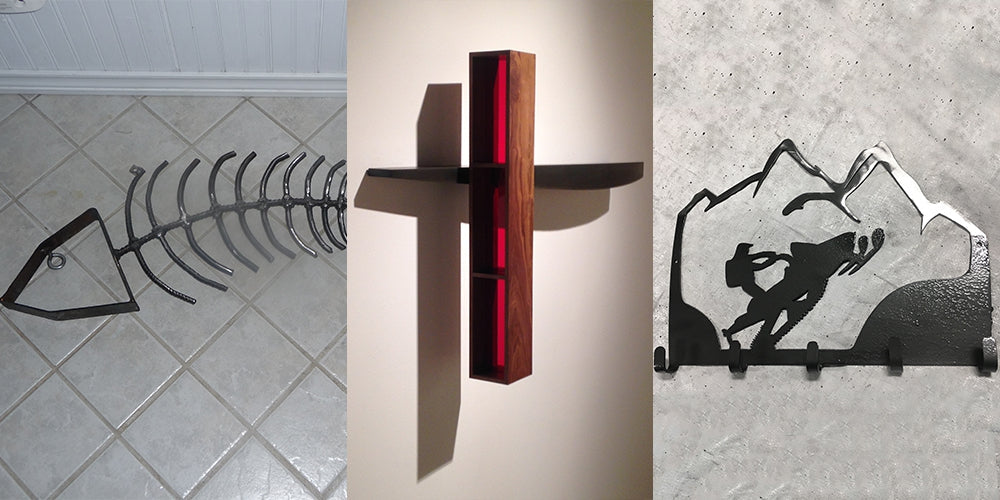There are people that pay good money to tan in a booth after work. As a welder, you can tan while at work. Talk about a good deal! At least until you’ve got skin cancer or 3rd degree sunburns. Pro-tip: You can avoid those unsightly tan lines by welding naked (ouch).
In reality, welding sunburns are nothing to laugh off. Most of us have heard about the dangers of welding UV rays and our eyes. And it’s definitely an important subject as eye-related injuries are one of the most common incidents. But often, the conversation stops at our peepers and we don’t address how those rays affect the rest of our bodies. Because of this, there’s a lot of confusion on how much protection you actually need.
What Causes More or Less Intense Rays While Welding?
We rarely think about the intensity of UV rays while welding. That’s because most safety equipment is designed to handle more ultra-violet light than your average welder could ever throw at it. But all light waves have intensity or, more accurately, shorter or longer wavelengths. Essentially the shorter the wavelength, the more that type of light will mess you up.

In most cases with welding, the light waves become shorter with heat. When you strike an arc and began welding, the temperature is incredibly hot. The hotter you go, the shorter the wavelengths. Technically, you could burn so hot you wouldn’t just produce UV rays, but also x-rays (though you’d need an incredibly powerful welder for these).
Obviously at that point, you’d be burnt to a crisp long before those x-rays could cause damage. So why does this matter? For welding protective gear it really doesn’t. Like we said, most gear has all the UV protection you’d need. But what if we’re not talking about protective gear. How about something like, oh say, a t-shirt.
Is a T-Shirt Enough UV Protection while Welding?
Just to be very clear, you should NOT weld in a T-shirt. There are a lot of injuries worse than sunburns that can happen during welding if you don’t have the right protection. But when it comes to UV protection, there are a lot of opinions on this one. There are welders that’ll tell you they’ve worn a t-shirt to weld every day for the last three decades without an issue. There are also welders that’ll tell you about someone who welded with a t-shirt just one time and ended up dead two months later.
To figure this argument out, let’s look at what really causes a sunburn. First, there’s the intensity of the rays as we discussed above. With welding, this basically means how hot you’re welding and how close you are to your arc. Then there’s the amount of time you’re exposed to the source of UV rays. Most sunburns don’t happen instantly (unless you’re exposed to something like an atomic bomb). Overtime, the constant exposure to UV rays reacts with more and more of your body’s atoms to cause sunburn.

This isn't adequate protection for your eyes or your skin.
To give you a sunburn, UV rays have to penetrate your t-shirt long enough to cause sufficient damage for you to visibly notice. So if you’re only welding for a short period of time or using processes that produce less intense UV rays, you might not get sunburned.
This is part of the reason why some welders can “get away” with a t-shirt while others end up with painful sunburns (or even worse). There are also other factors, such as how thick the t-shirt is or even what color it is. A thick t-shirt made with synthetic fibers is not the same thing as one of those paper-thin shirts you’ll get for free at concerts. Finally, some people have skin that just burns more easily than others.
So, can you get away with welding in a t-shirt without getting a sunburn? Depending on these factors, you might. But here’s why it’s not worth the risk.
- While a t-shirt offers some protection, it doesn’t cover very much. You’ll still get sunburns on your neckline and areas where your arms are exposed.
- Skin cancer can be a fate worse than death. Compared to the cost of medical bills, protective clothing is a fraction of the price.
- As we said at the beginning, protective clothing blocks more than UV rays. It’s also there for sparks and hot slag, which a t-shirt won’t handle.
If you're not looking to fry your skin, we sell the most reliable protective gear available at the best price possible.





